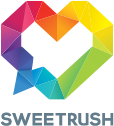How To Use The 7 Key Characteristics Of Organizational Culture To Enrich Your Company
Managing an organization these days can be a bit like white water rafting. If you’ve ever been out on the rapids, you learn how to pay attention to the signs, read the river, and gauge the right spot to put your paddle in. My brother-in-law is a former professional rafting guide. The way he quickly senses and responds to the river reminds me of certain executives who have an uncanny ability to address the right needs at the right time. Leaders of the best organizational cultures focus on 7 key characteristics as a point of reference to determine what is needed at each stage in the journey. They are watching these seven areas to know when a rough patch could be on the horizon, and can quickly pivot as needed. The fundamentals of this model are based on Maslow's hierarchy of needs and adapted by Richard Barrett, former values coordinator at the World Bank and the founder of Barrett Values Centre [1].
Twentieth-century psychologist Abraham Maslow believed that humans have a hierarchy of needs: we need to care for our physical and safety needs, our sense of belonging, and our self-esteem (also known as our ego self) before we can move into a deeper place of living our purpose, which he called self-actualization.

When Richard Barrett was at the World Bank, he created a model and survey, based on Maslow’s hierarchy, for evaluating the cultural health in the region of World Bank potential investments. He realized that these developmental levels worked not only at the individual level, but also represented the developmental stages of teams and organizations—essentially any systems run by humans. Makes sense, doesn’t it? Barrett’s model and survey became reliably predictive of the success of the World Bank’s potential investments. Barrett then took this survey and model and formed Barrett Values Centre to work with corporations around the world. His model has now been road-tested by thousands of companies to transform their organizational culture and performance. (Side note: I had the great honor of working with Richard and many clients for seven years at Barrett Values Centre!)
7 Key Characteristics Of Organizational Culture
As you look through this list of organizational levels, consider what you believe your organization does best—and where you may lack focus.

Financial Stability (Level 1)
Healthy organizations have a focus on financial stability; organizational growth, revenues, a growing client base, and profit margins are important ingredients for success.
Harmonious Relationships (Level 2)
Most of us can sense when there’s tension between people or within a culture. (I know it within minutes of arriving at a restaurant from observing the wait staff.) We all have a sixth sense for this kind of discord between individuals or within organizational cultures. Likewise, you can also tell when things are going well because there is open communication, employee and customer satisfaction, and a sense of loyalty and friendship among team members.
High Performance (Level 3)
This developmental level is all about achievement and having the right systems, quality, best practices, and pride in performance. It’s about knowing what you do well, and what is not in your wheelhouse. It’s about traction and making your mark.
Continuous Renewal And Learning (Level 4)
Everyone is abuzz talking about the pace of change and innovation—and keeping up with them. We, as organizations, must continuously adapt, learn, grow, set goals, and empower one another in the quest forward.
Building Internal Community (Level 5)
This goes beyond having harmonious relationships. It’s about a shared sense of purpose and values. It’s about having integrity in how we individually and collectively act. And, it’s about building trust, passion, creativity, and openness among us.
Making A Difference: Strategic Partnerships And Alliances (Level 6)
Once you have a clear sense of purpose and values, you can align with other teams and organizations to make a larger difference. If we attempt to partner with other organizations before we truly know our own value, the alliance erodes. Partnerships require that both parties have skin in the game, have something at stake, and are working together for a larger cause or mission.
Service To Humanity And The Planet (Level 7)
Service includes social responsibility, future generations, long-term perspective, ethics, compassion, and wisdom. We sometimes jokingly call this the “Mother Theresa level,” because it’s all about the difference you make to humanity and the planet. It’s about the need to think of “we” before “me.” Some Native American tribes considered the impact on seven generations before making any significant decision.
Full-Spectrum Performance (All Levels)
For optimum, full-spectrum performance, organizations should pay attention to each of the 7 characteristics of organizational culture described above. I’ve seen nonprofits with a wonderful focus on strategic partnerships and a deep commitment to service, but without financial stability. A lack of financial stability can erode the best intentions and the ability to create appropriate systems—and generally, hobble an organization. On the other end of the spectrum, focusing solely on financial stability and high performance is a short-term vision without a strong foundation. Enron and the housing lenders that triggered the 2008 financial crisis, were perhaps the poster children for this overemphasis on financial growth. As human beings, we have a range of needs, and so do organizations. Employees want to believe they’re making a difference, but also expect appropriate amounts of stability and control to keep things running smoothly. The magic formula lies in the balance.
Team Exercise: Apply The 7 Characteristics Of Organizational Culture To Your Team
Now that you’ve had an opportunity to think about your organization, you can also apply the same 7 levels to your team. For those of you who are part of executive-level teams, your team synonymously represents the organization—it starts at the top!
Follow These Steps
- Consider sharing the descriptions of the 7 levels with your team.
- Write the name of each level on flip chart paper, with some space between each word.
- Give each team member three green circle stickers and three red circle stickers.
- Ask your team members to put their stickers next to the areas that they think the team does best (green) and the areas that are lacking or need more attention (red).
- Have a brainstorming session about what you do well. Also, share ideas for how to improve the areas needing to move from red to green.
- Get tactical. Select three to five specific programs to work on over the next three months, identify clear, measurable objectives and assign clear responsibilities to team members. Develop a project plan for each program.
References:
1. Maslow's hierarchy of needs










